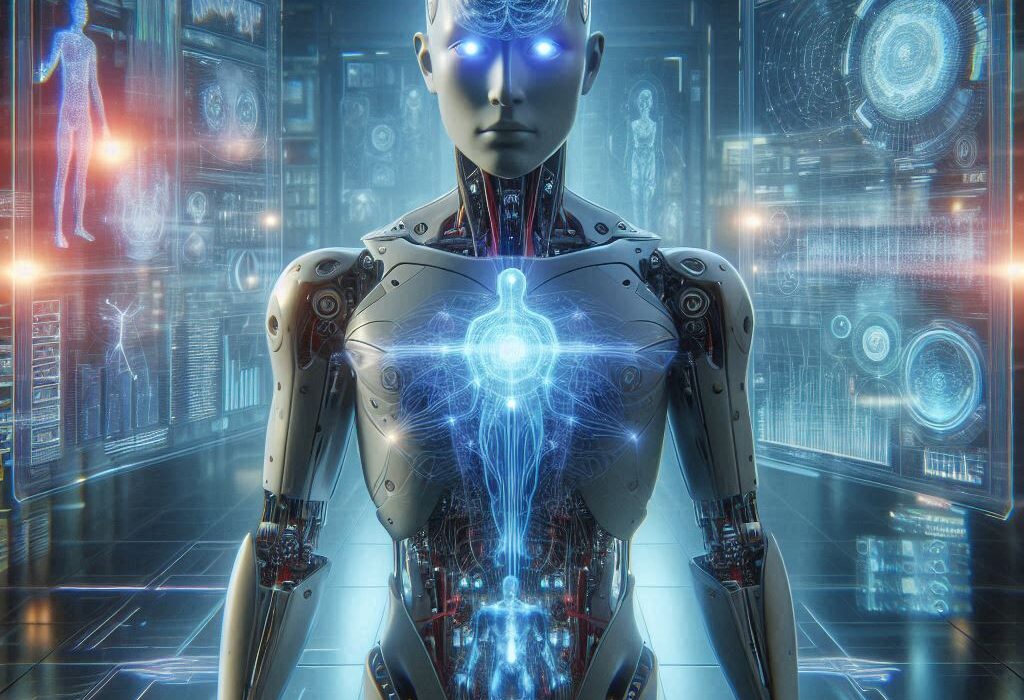In the 21st century, society has entered an era where computation permeates every corner of human life. From smartphones and artificial intelligence to data-driven healthcare and self-driving cars, computational systems underpin the modern world. The ability to use, understand, and shape these systems has become an essential life skill—one that transcends traditional boundaries between science, art, business, and daily living. This new essential ability is called computational thinking.
Computational thinking is more than just programming or computer use. It is a way of approaching problems, designing systems, and understanding human behavior that draws on the concepts fundamental to computer science. It represents a powerful new literacy—comparable to reading, writing, and arithmetic—that empowers individuals to thrive in a computationally rich world.
The phrase “Computational Thinking” was popularized by computer scientist Jeannette Wing in 2006, though its roots go back to the pioneering days of computing. Wing argued that computational thinking is not just for computer scientists but a fundamental skill for everyone, just as mathematical and scientific thinking are. In today’s interconnected, algorithmic, and data-driven world, this vision has become more relevant than ever. Computational thinking now stands at the core of modern education, innovation, and societal development.
The Meaning of Computational Thinking
At its essence, computational thinking (CT) refers to the mental processes involved in formulating problems and their solutions so that these solutions can be effectively carried out by a human or a computer. It is a way of reasoning that uses the principles of computer science to solve problems in any discipline—science, engineering, social studies, art, or daily life.
Computational thinking involves breaking down complex problems into manageable parts, recognizing patterns, abstracting general principles, and designing step-by-step logical processes (algorithms) to reach solutions. This process mirrors the way computers solve problems but is applied at a human cognitive level.
Unlike computer programming, which focuses on coding specific instructions for a machine, computational thinking emphasizes how to think about problems computationally before any code is written. It is the bridge between human logic and machine execution—a form of analytical creativity that blends logic, mathematics, and imagination.
In this sense, computational thinking is both a mindset and a skill set. It is a universal problem-solving approach that extends beyond computers, enabling people to think clearly, logically, and efficiently about any challenge.
The Evolution of Computational Thinking
The roots of computational thinking go back to the birth of modern computing. In the mid-20th century, pioneers like Alan Turing, John von Neumann, and Grace Hopper not only built early computers but also developed the intellectual foundations of computation. Their work demonstrated that problems could be expressed as sequences of logical operations—a concept that revolutionized mathematics, logic, and engineering.
Alan Turing’s 1936 paper On Computable Numbers introduced the idea of a universal machine capable of performing any computable task through algorithmic steps. This idea—an abstract model of computation—formed the theoretical basis of computer science. Over time, it also influenced cognitive science and education, as researchers began to recognize that computational processes mirror certain aspects of human thought.
During the 1960s and 1970s, programming began to be seen not only as a technical skill but as a new way of reasoning. Seymour Papert, a student of Jean Piaget, developed the educational programming language Logo and introduced the concept of “constructionism,” arguing that children could learn better by creating and experimenting with code. He believed programming could transform how students learn mathematics, science, and problem-solving, laying early groundwork for computational thinking in education.
In 2006, Jeannette Wing redefined the idea for a new century. She described computational thinking as a “fundamental skill for everyone, not just computer scientists,” emphasizing that it involves conceptualizing problems in ways that leverage the power of computation. Her essay sparked global discussions about integrating computational thinking into all levels of education, from primary schools to universities.
By the 2010s, as technology became ubiquitous and the world entered the era of big data, artificial intelligence, and automation, computational thinking evolved into a literacy as essential as reading and numeracy. The ability to think computationally now underlies not only computer science but also biology, economics, environmental science, and the humanities.
Core Concepts of Computational Thinking
Computational thinking encompasses several interrelated cognitive processes that guide how humans structure problems and solutions. While the terminology can vary, the essential elements remain consistent across disciplines.
The first is decomposition, the process of breaking down a complex problem or system into smaller, more manageable parts. Computers—and humans—handle complexity best by dividing it into simpler subproblems that can be solved individually and then combined. Decomposition mirrors modularity in software engineering and reductionism in science, both of which rely on analyzing components before understanding the whole.
Next comes pattern recognition, the ability to identify similarities and regularities within and across problems. Recognizing patterns helps humans and machines predict outcomes, make generalizations, and avoid redundant work. In computation, pattern recognition enables the creation of reusable solutions, just as biological organisms rely on recognizing patterns in their environment for survival.
Abstraction follows pattern recognition. It involves focusing on essential details while ignoring irrelevant ones. Abstraction allows one to generalize solutions and create models that represent real-world phenomena. For example, a programmer might abstract the details of hardware operations to write high-level code, while a scientist might use a simplified mathematical model to describe complex natural processes.
Finally, algorithmic thinking refers to designing ordered, logical sequences of steps to solve a problem. Algorithms are the cornerstone of computation, whether embodied in computer code or in mental processes. Good algorithms are efficient, precise, and adaptable—characteristics that define effective problem-solving in any domain.
Together, these processes—decomposition, pattern recognition, abstraction, and algorithmic design—form the cognitive architecture of computational thinking. They reflect how both humans and computers process complexity to achieve understanding and action.
Computational Thinking as a New Literacy
In traditional education, literacy refers to the ability to read and write. Later, mathematical literacy—the ability to reason quantitatively—was added as an essential competence. In the 21st century, computational literacy has joined these as a third foundational pillar.
Computational thinking underpins this new literacy. Just as reading allows people to understand language and mathematics allows them to interpret numbers, computational thinking enables them to understand the logic of digital systems. It is the literacy of automation, algorithms, and artificial intelligence—the grammar of the digital age.
This literacy is not limited to computer programmers. A journalist analyzing data, a biologist modeling ecosystems, an artist generating digital designs, or a policymaker assessing algorithmic bias all rely on computational thinking. It is a universal skill that empowers people to participate actively and critically in a world governed by computational systems.
Moreover, computational literacy transforms how humans interact with technology. Instead of being passive users of digital tools, those with computational thinking skills can question, design, and improve these tools. They understand how algorithms influence decisions, how data can be manipulated, and how systems can fail or be biased. Thus, computational thinking fosters digital empowerment and ethical awareness, making it a form of critical literacy as well.
The Role of Computational Thinking in Education
Education systems worldwide are increasingly recognizing computational thinking as a core component of modern curricula. Integrating CT into education is not merely about teaching students how to code; it is about cultivating a mindset that equips them for lifelong problem-solving.
In early education, computational thinking can be introduced through games, puzzles, and storytelling that encourage logical reasoning and pattern recognition. Simple coding platforms like Scratch allow children to experiment with sequencing, loops, and conditions without complex syntax, developing their understanding of algorithms through play.
At the secondary level, computational thinking supports learning across subjects. In science, students can model physical processes or simulate experiments. In mathematics, they can explore algorithmic patterns in geometry or algebra. In social studies, they can analyze data trends or design simulations of social systems. In the arts, they can generate procedural designs or interactive media.
At the university level, computational thinking becomes a cross-disciplinary framework. Fields such as bioinformatics, computational physics, digital humanities, and economics all rely on algorithmic methods. Teaching CT alongside domain knowledge enables students to handle the massive data sets, simulations, and models that define modern research.
Educational reformers increasingly argue that computational thinking should be taught as a literacy rather than a specialized subject. Just as writing is used across disciplines to express and organize thought, computational thinking should be used to explore, represent, and solve problems in every field. This integration not only enhances cognitive skills but also prepares students for a workforce that demands adaptability in the face of rapid technological change.
Computational Thinking and Creativity
One of the most remarkable aspects of computational thinking is its connection to creativity. Contrary to the misconception that computation is purely mechanical, computational thinking actually amplifies human creativity by expanding the ways we can represent, manipulate, and explore ideas.
Creativity in the digital era often involves designing systems that create. Algorithmic art, generative music, and interactive storytelling are examples of how computational thinking enables new forms of artistic expression. By understanding how to construct rules, constraints, and procedures, creators can build frameworks that produce endless variations of aesthetic outcomes.
Computational creativity also manifests in scientific and engineering innovation. Simulations allow scientists to visualize complex phenomena, while computational design enables engineers to optimize structures beyond what human intuition alone could achieve. The ability to think computationally allows creators to transcend traditional limits of scale, complexity, and imagination.
Thus, computational thinking does not diminish creativity—it augments it. It encourages experimentation, iteration, and exploration within structured frameworks, combining logic and imagination in equal measure.
The Connection Between Computational Thinking and Problem Solving
Problem solving lies at the heart of both human cognition and computation. Computational thinking provides a systematic framework for tackling problems that are too complex for intuitive reasoning alone.
A computational thinker approaches problems through structured analysis: defining the problem clearly, identifying constraints, breaking it down into smaller tasks, and constructing logical steps to reach a solution. This mirrors the way computers handle tasks but remains distinctly human, as it involves judgment, context, and creativity.
Importantly, computational thinking promotes generalization. Once a solution is designed, it can be adapted or reused in new situations. This ability to transfer solutions across contexts is central to innovation and efficiency.
Moreover, computational thinking encourages iterative refinement—testing, debugging, and improving solutions through feedback. This iterative mindset fosters resilience and adaptability, qualities essential in a world of constant technological and social change.
Computational Thinking and Artificial Intelligence
In the age of artificial intelligence, computational thinking has gained even greater significance. AI systems are built on algorithms that learn from data, make predictions, and adapt to new information. To understand, design, and evaluate such systems, one must think computationally.
Computational thinking enables individuals to grasp how AI works—how data is structured, how algorithms learn, and how models can be biased or limited. It allows people to engage critically with AI technologies rather than accepting them as opaque black boxes.
Moreover, computational thinking forms the foundation of AI literacy. As society increasingly relies on AI for decision-making in healthcare, education, finance, and law, understanding the logic and limitations of computational systems becomes essential for ethical participation in digital life.
For researchers and engineers, computational thinking drives the development of new AI architectures and learning algorithms. For citizens, it fosters informed awareness of how AI affects privacy, fairness, and accountability. In both cases, computational thinking bridges the gap between human values and machine intelligence.
Computational Thinking Across Disciplines
Computational thinking has transformed not only computer science but virtually every academic discipline. In the natural sciences, it enables complex simulations of weather, molecular dynamics, and astrophysical systems. In the life sciences, it drives genomics, bioinformatics, and systems biology, turning biology into a data-driven science.
In social sciences, computational thinking allows researchers to model social networks, simulate economic systems, and analyze massive datasets from online behavior. In the humanities, scholars use text mining, digital archives, and algorithmic analysis to uncover patterns in literature, art, and history that were previously invisible.
Even in fields like law, ethics, and politics, computational thinking provides tools to analyze algorithmic governance, digital privacy, and cyber justice. As society becomes algorithmically mediated, the ability to understand and critique computational systems becomes essential for democracy and human rights.
Thus, computational thinking is not confined to laboratories or code. It is the intellectual infrastructure of modern knowledge—a way of reasoning that connects diverse domains through the logic of computation.
The Social and Ethical Dimensions of Computational Thinking
As computational systems increasingly influence social and political structures, computational thinking must also include ethical reasoning. Understanding algorithms means understanding their social consequences.
Algorithms are not neutral. They reflect the data, assumptions, and goals of their creators. Computational thinkers must therefore be aware of bias, fairness, transparency, and accountability in algorithmic decision-making. Ethical computational thinking involves questioning who benefits from automation, who is excluded, and how technology shapes power and identity.
Moreover, as automation changes the nature of work, computational thinking plays a role in ensuring equitable access to opportunities. By democratizing computational literacy, societies can empower citizens to participate in shaping technology rather than being shaped by it.
Thus, computational thinking is not only cognitive but civic. It is part of responsible citizenship in the digital age—combining technical understanding with moral awareness.
The Future of Computational Thinking
As technology evolves, computational thinking will continue to expand in scope and depth. The emergence of quantum computing, neuromorphic hardware, and bioinformatics will introduce new computational paradigms, requiring even more sophisticated ways of thinking.
Education systems are already adapting to this future. Integrating computational thinking across subjects prepares students not just for specific jobs but for continuous learning in an ever-changing world. The next generation will need to understand not only how to use computational tools but how to design, evaluate, and govern them responsibly.
Beyond education, computational thinking will shape the future of creativity, science, and governance. It will enable new forms of collaboration between humans and machines, new methods of discovery, and new ethical frameworks for technology. The challenge will be to ensure that computational literacy spreads broadly and equitably, so that the benefits of computation are shared by all.
Conclusion
Computational thinking is more than a technical skill—it is a universal literacy for the 21st century. It transforms how people learn, create, and solve problems. It bridges human reasoning with machine logic, empowering individuals to understand and shape a world increasingly defined by computation.
Like reading and writing, computational thinking is a form of expression—a way to articulate ideas, model reality, and bring new possibilities to life. It teaches not only how to think like a computer but how to think better as a human being: logically, creatively, ethically, and collaboratively.
In an age where algorithms influence nearly every aspect of existence, computational thinking is the key to participation, innovation, and understanding. It is the language of the modern world, the engine of scientific discovery, and the new literacy that will define the future of human civilization.






